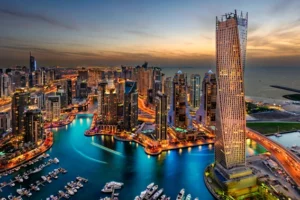The Middle East is undergoing significant turmoil due to ongoing conflicts.
These disturbances have led to economic instability across the region. Notably, the Israel-Hamas conflict has intensified these challenges.
The Economist highlights how these tensions could push already fragile economies to the brink.
A key shipping route, the Red Sea, essential for global trade, has seen a 70% decrease in traffic due to Houthi attacks.
This situation affects various countries. Eritrea, which relies on shipping for its exports, and Sudan, needing aid amidst civil strife, are particularly impacted.

Egypt, heavily reliant on the Suez Canal’s $9 billion in tolls, along with Israel’s tech industry and Jordan’s tourism sector, faces economic threats from these developments.
Challenges and Transformations
Tourism, vital for many Middle Eastern nations, has nearly halted. Travel operators have reduced their services, and cruise lines have canceled or rerouted their Middle Eastern itineraries.
This has repercussions even for countries like the UAE and Saudi Arabia, which aim to become tourism hubs.
Boycotts against companies perceived as pro-Israel, like McDonald’s and Starbucks, have emerged, influenced by pro-Palestinian sentiment on social media.
Despite claims of rising sales, McDonald’s reports significant impacts in some Middle Eastern markets due to misinformation.
The possibility of the conflict escalating into a broader regional war poses a grave economic threat.
The World Economic Forum suggests the region can manage the economic impact of recent Houthi attacks and Western airstrikes in Yemen if global demand remains weak.
However, the long-term risks to the global economy and supply chains, particularly through the Red Sea, are significant.
In response to changing geopolitical dynamics, regional powers are seeking strategic autonomy.
The expansion of BRICS, welcoming new members like Egypt and the UAE, signifies a move away from Western dominance.
Despite the war, efforts for regional reconciliation, such as the Saudi-Iranian deal and Syria’s return to the Arab League, continue.
Environmental challenges add to the region’s woes. Natural disasters have highlighted the need for better preparedness and response mechanisms.
As the Middle East looks towards 2024, navigating these economic, political, and environmental challenges will be crucial for its stability and prosperity.

